13 Vintage Ads That Would Never Be Approved Today
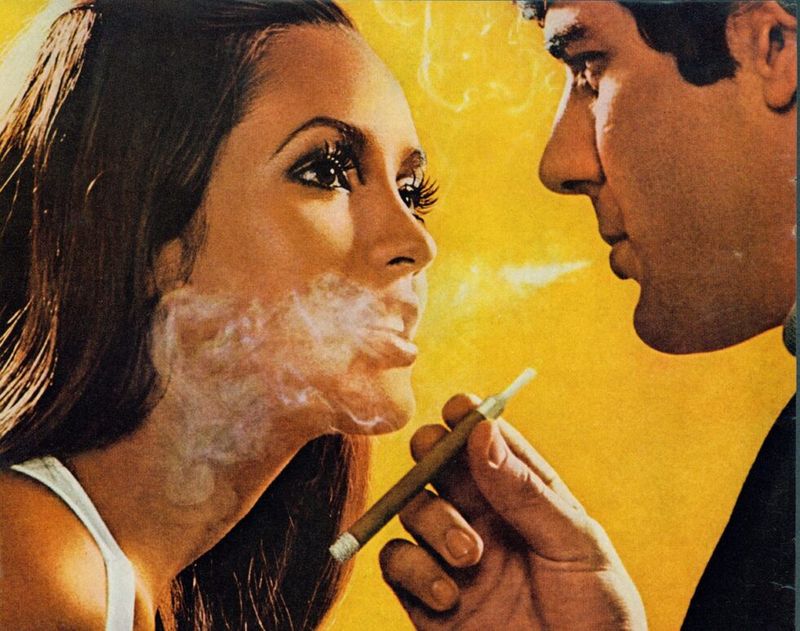
Looking back at advertising history reveals some truly shocking campaigns that somehow made it to print. From cigarettes marketed to doctors to sexist household product ads, these marketing missteps reflect outdated values and dangerous misinformation. Today’s standards would never allow these problematic advertisements, but they serve as important reminders of how far we’ve come in recognizing harmful messaging.
1. Doctors Peddling Deadly Habits
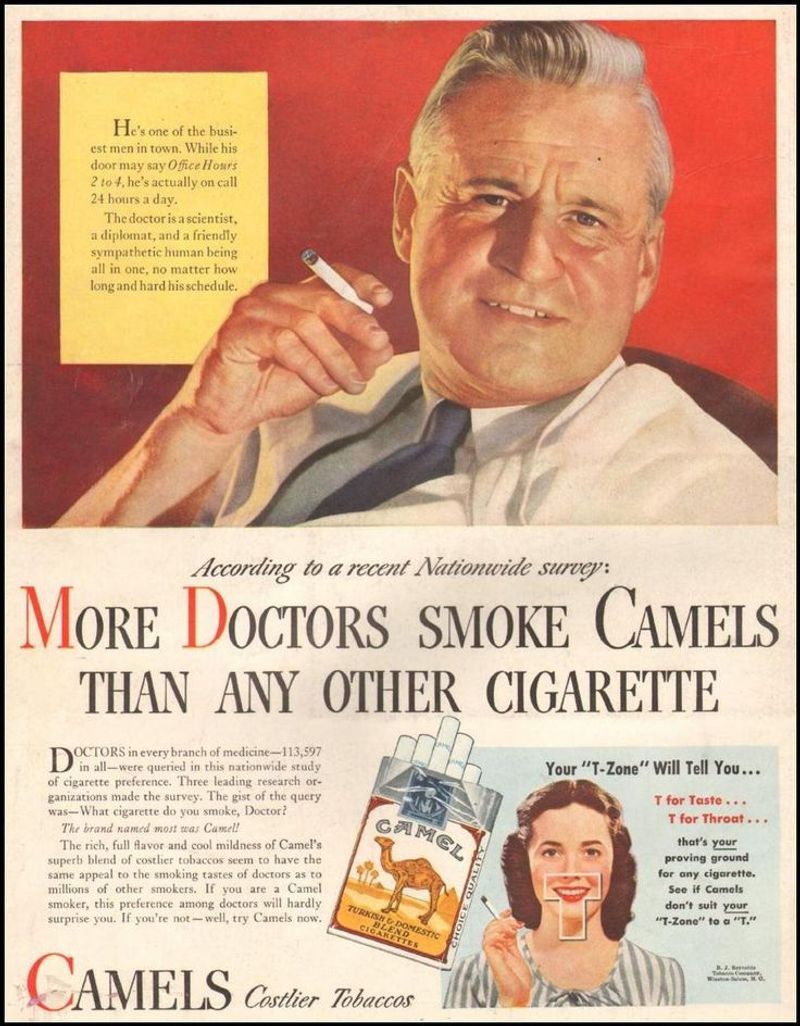
The Camel cigarette ads from the 1940s-1950s featuring white-coated physicians proudly declaring “More doctors smoke Camels” represent one of advertising’s most dangerous deceptions. Tobacco companies deliberately manipulated public trust in medical professionals to sell products now known to cause cancer and heart disease.
These advertisements featured actual doctors who received free cartons of cigarettes before being surveyed about their preferred brand. The manipulation was calculated and deadly.
Modern viewers would be horrified seeing health professionals endorsing products that kill thousands daily. This cynical marketing strategy contributed to decades of preventable deaths and illness.
2. Beauty-Based Friendship Destruction

Pond’s cold cream advertisements from the 1920s asked women the devastating question: “Is your best friend prettier than you?” These ads weaponized female insecurity and competition, suggesting beauty products could solve social anxiety and jealousy.
The marketing strategy deliberately pitted women against each other, implying friendships were based on competitive appearance rather than genuine connection. Young women were taught that their value lay primarily in their looks.
This toxic messaging encouraged women to view other women as rivals rather than allies. Today’s body positivity movement would immediately reject such harmful manipulation of female relationships for profit.
3. Cigarettes as Diet Supplements
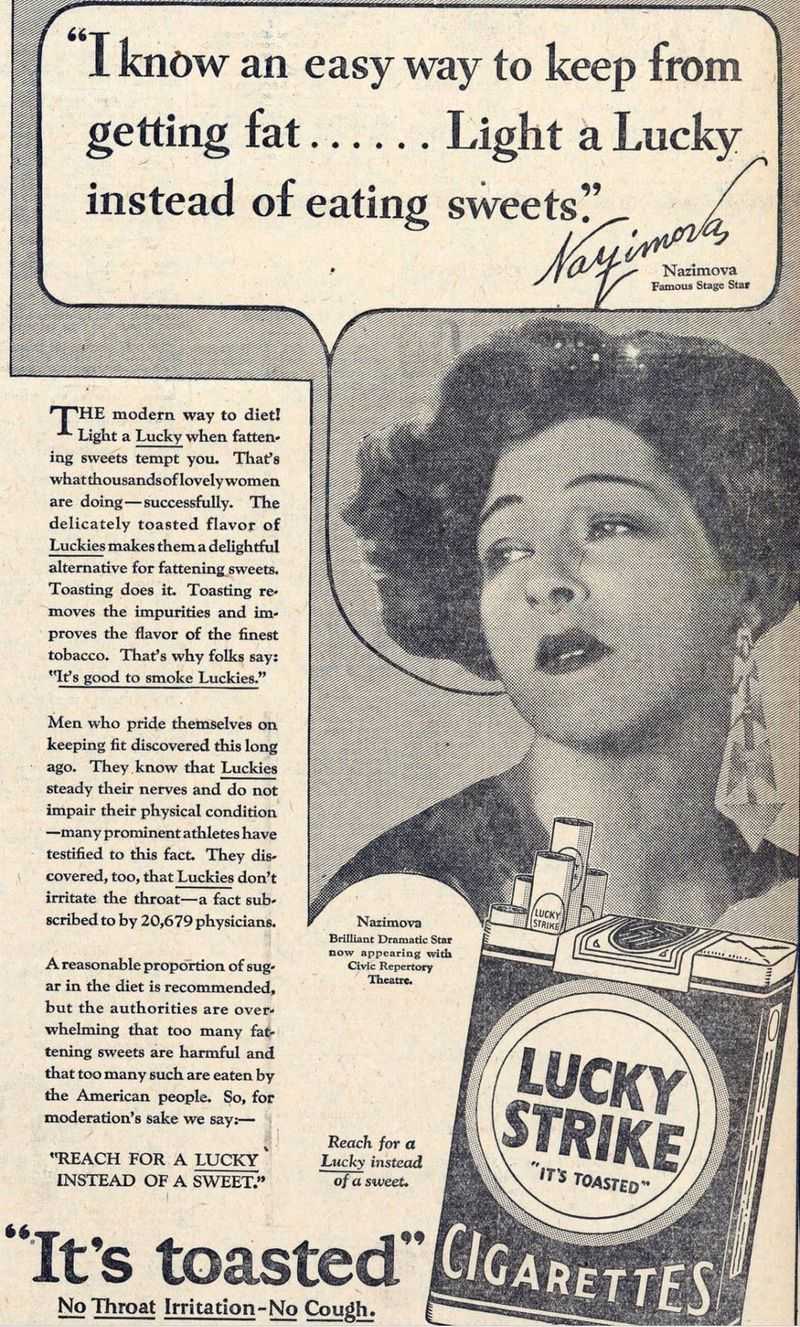
Lucky Strike’s infamous 1920s campaign urged women to “Reach for a Lucky instead of a sweet” – marketing nicotine addiction as a weight loss method. The ads featured slim models and explicitly encouraged replacing food with cigarettes to maintain a fashionable figure.
American Tobacco Company deliberately exploited women’s body image concerns, creating dangerous associations between smoking and thinness. The campaign increased female smoking rates dramatically during this period.
Modern viewers would be appalled by advertisements promoting starvation and nicotine addiction as beauty solutions. These ads represent the dangerous intersection of diet culture and tobacco marketing that targeted vulnerable women.
4. Household Cleaner as Intimate Product

Lysol’s disturbing 1920s-1940s ads promoted the harsh disinfectant for “feminine hygiene” – a euphemism for contraception and vaginal douching. Women were shamed with suggestions that their natural bodies were unclean and threatened their marriages.
These advertisements played on fears of “feminine odor” and marital rejection, promising Lysol would protect “dainty feminine allure.” The product caused chemical burns, inflammation, and even deaths.
The campaign exploited women’s lack of reproductive education and healthcare access. Today, we recognize these ads as dangerously misleading medical misinformation that caused physical harm while perpetuating harmful myths about women’s bodies.
5. Sugar Rush Marketing to Kids

Kellogg’s Sugar Frosted Flakes advertisements from the 1950s-60s boldly claimed “The sugar keeps your energy up!” while targeting children. Tony the Tiger enthusiastically promoted heavily sweetened cereal as a nutritious breakfast option during Saturday morning cartoons.
Parents were assured that adding sugar to breakfast was beneficial for children’s health and energy levels. No mention was made of tooth decay, obesity risks, or blood sugar spikes.
The campaign deliberately misled families about nutrition while establishing lifelong sugar dependencies in young consumers. Modern advertising standards would immediately flag these claims as dangerously misleading health information targeting vulnerable children.
6. Racist Tobacco Imagery
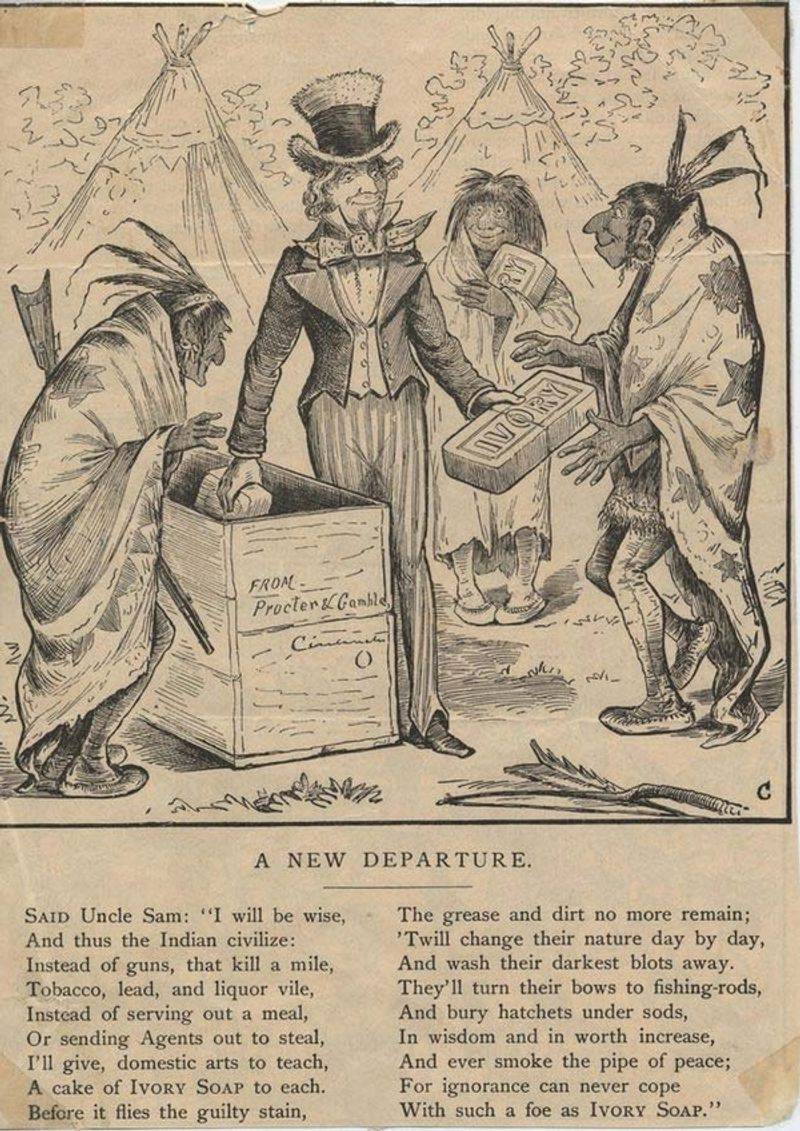
Pearl Tobacco’s 1800s advertisements featured grotesque caricatures of Native Americans, reducing complex cultures to crude stereotypes used to sell tobacco products. These images reinforced harmful colonial narratives while appropriating and distorting Indigenous imagery for commercial gain.
The ads depicted Native Americans with exaggerated features and primitive behaviors, perpetuating racist stereotypes that dehumanized entire populations. Such imagery contributed to widespread discrimination and cultural erasure.
Viewing these advertisements today reveals the casual racism embedded in everyday consumer products of the era. Modern ethical standards recognize such depictions as deeply offensive cultural appropriation that perpetuates harmful stereotypes.
7. Narcotic Teething Solution
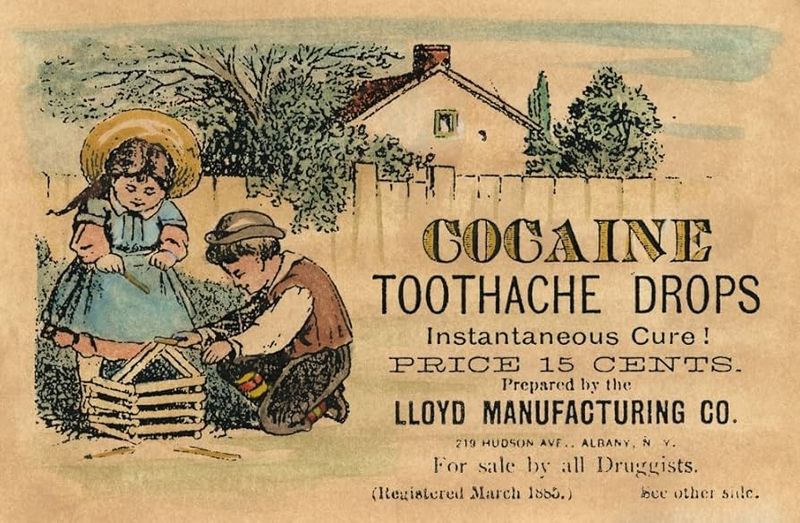
Baby Cocaine Toothache Drops from the late 1800s marketed actual cocaine as a pain reliever for teething infants. The cheerful packaging featured babies and promised parents quick relief from their child’s discomfort through what we now know is a highly addictive narcotic.
Parents administered cocaine to infants without understanding its dangers, trusting the product’s claims of safety. The medicine contained no warning labels about dosage or side effects.
Before pharmaceutical regulations, dangerous substances were routinely marketed for children. This product represents one of history’s most alarming examples of unregulated medicine targeting vulnerable populations through misleading health claims.
8. Harassment Disguised as Romance
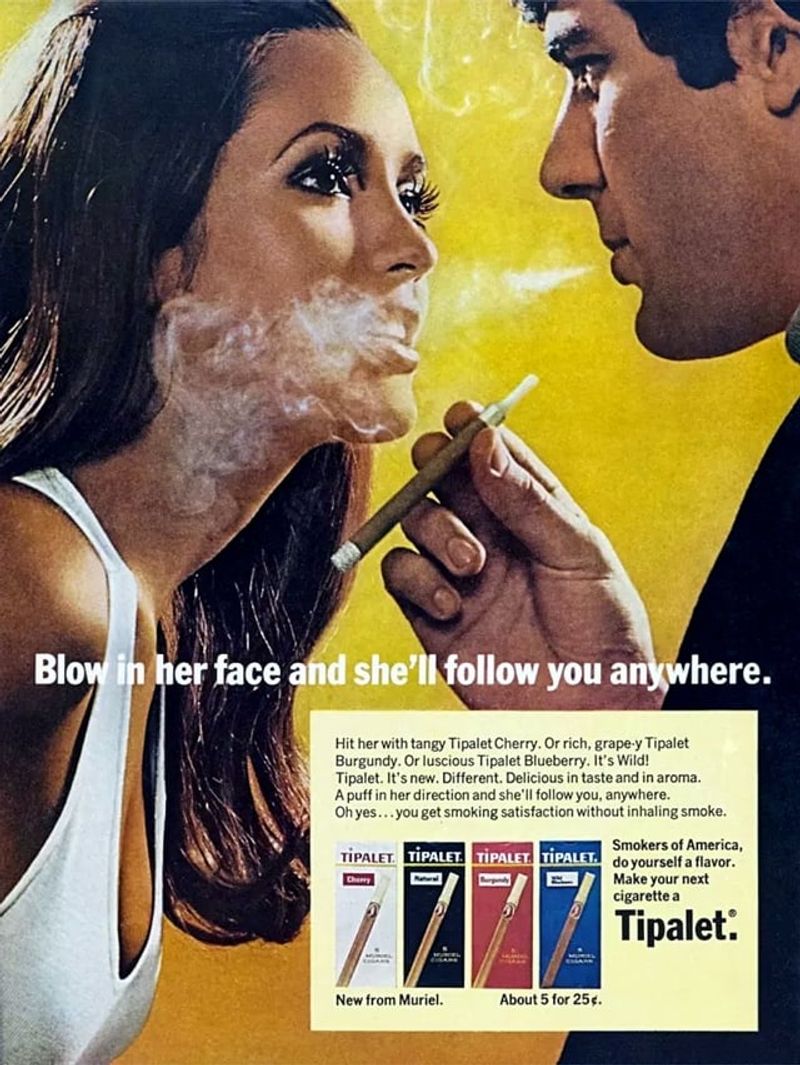
Tipalet Cigarettes’ infamous 1960s ad instructed men to “Blow in her face and she’ll follow you anywhere” – portraying women as mindlessly attracted to men who harass them with cigarette smoke. The advertisement featured a man blowing smoke at a woman who appears entranced rather than annoyed.
This campaign normalized inappropriate behavior and suggested women enjoyed unwanted advances. It presented women as objects to be manipulated through juvenile tactics.
Beyond the sexism, the ad promoted blowing smoke directly into someone’s face – now recognized as both rude and potentially harmful. Modern viewers would immediately recognize this as promoting harassment rather than romance.
9. Cooking Skills Gendered
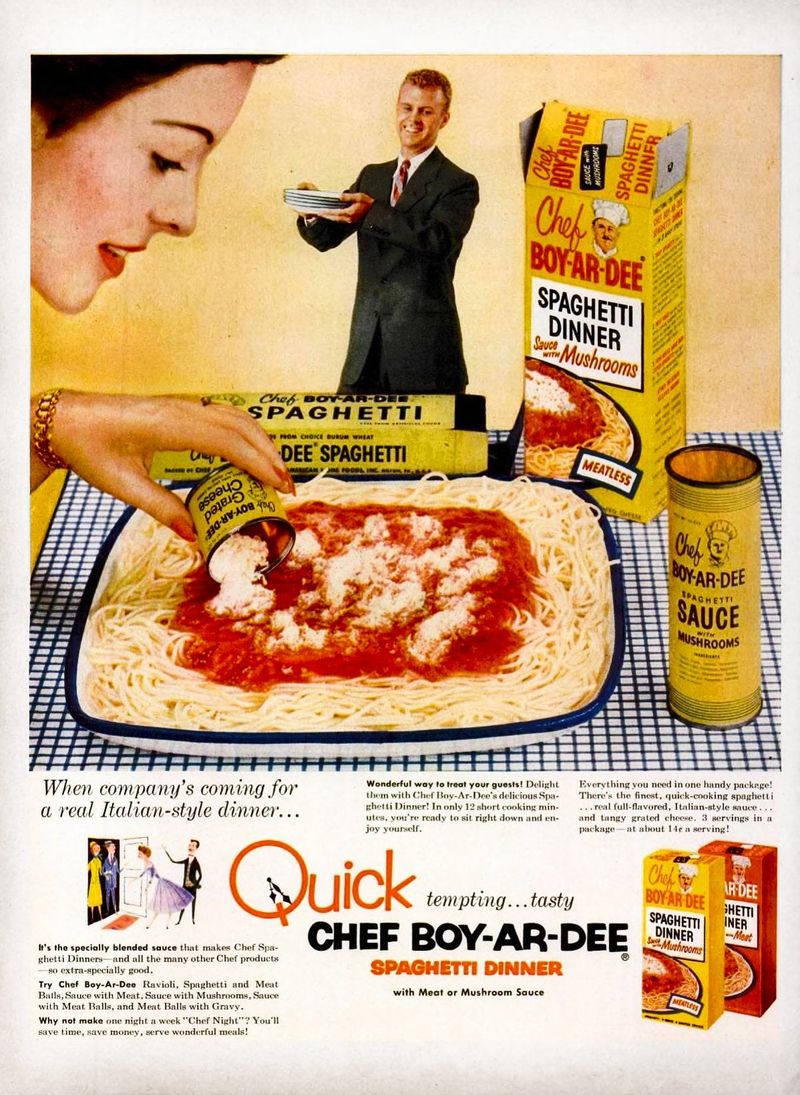
Chef Boy-Ar-Dee’s 1960s campaign proclaimed their products were “So simple, even a man can do it!” – reinforcing harmful stereotypes about gender roles in the kitchen. The advertisements showed bumbling husbands attempting basic cooking tasks, portrayed as incompetent without simplified products.
These ads simultaneously insulted men’s capabilities while reinforcing the notion that cooking was primarily women’s work. They suggested men were helpless in domestic settings, needing special accommodations to perform basic tasks.
The campaign reflected and reinforced rigid gender expectations that limited both men and women. Today’s viewers would recognize how these stereotypes restricted opportunities and perpetuated unhealthy relationship dynamics.
10. Soap Promoting Racial Prejudice
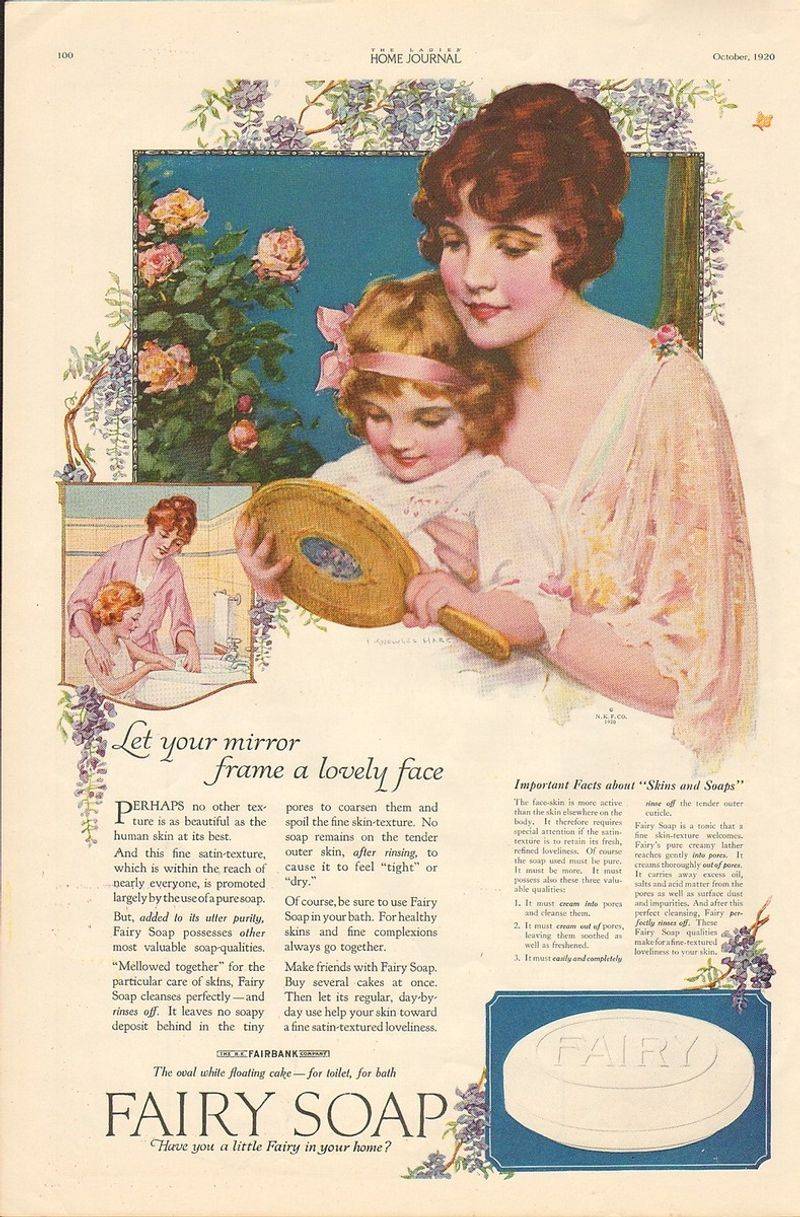
Fairy Soap’s troubling 1920s advertisements declared “The cleanest children are the healthiest” while featuring imagery that often implied white skin was inherently cleaner than darker skin. Some ads showed Black children being “cleaned” to appear lighter, promoting deeply harmful racial associations.
These soap advertisements linked cleanliness, moral purity, and health with whiteness. The racist undertones suggested that darker skin was somehow unclean or unhealthy.
Such messaging reinforced dangerous prejudices while promoting a product meant for basic hygiene. Modern standards recognize these ads as promoting harmful racial stereotypes that damaged self-image and perpetuated discrimination.
11. Soda Pop for Babies

Seven-Up’s shocking 1950s campaign encouraged parents to “Give babies a boost” by adding the carbonated beverage to infant formula. The advertisements featured happy babies drinking from bottles mixed with soda, promising better acceptance of formula and improved infant nutrition.
Marketing directly targeted new mothers, suggesting 7-Up could help with colic, upset stomachs, and feeding difficulties. One ad even recommended starting babies on soda as young as two days old!
Modern pediatricians would be horrified at recommendations to give infants carbonated sugar water. This campaign represents a dangerous era before regulations protected children from misleading health claims in advertising.
12. Addictive Drug as Cough Medicine
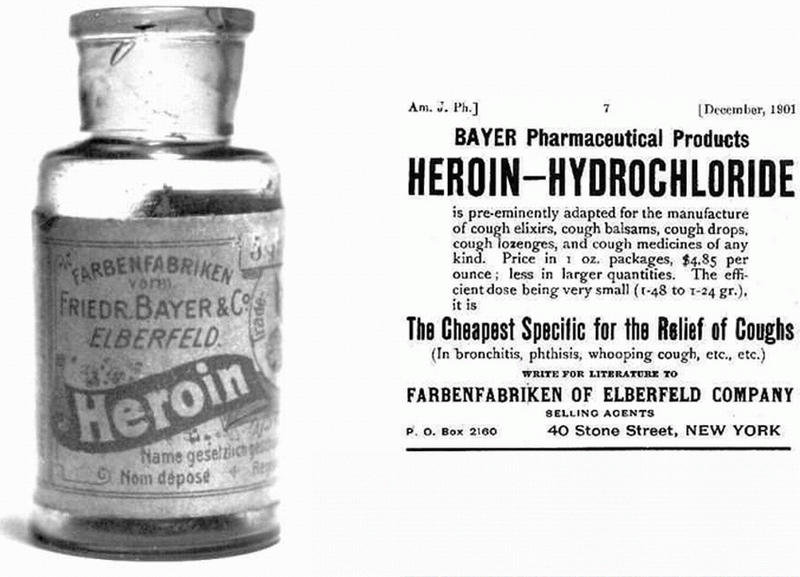
Bayer’s 1890s advertisements proudly marketed heroin as a safe, non-addictive cough suppressant for adults and children. The company promoted the drug as more effective than codeine, with packaging featuring the Bayer cross that consumers trusted for aspirin.
These advertisements appeared in medical journals and popular magazines, recommending heroin for common ailments like coughs, colds, and pain. Parents were encouraged to give children heroin-laced cough syrup for winter illnesses.
Before understanding addiction mechanisms, pharmaceutical companies freely marketed now-controlled substances. This campaign represents one of medicine’s most dangerous marketing errors, creating addiction while promising health benefits.
13. Domestic Violence as Comedy
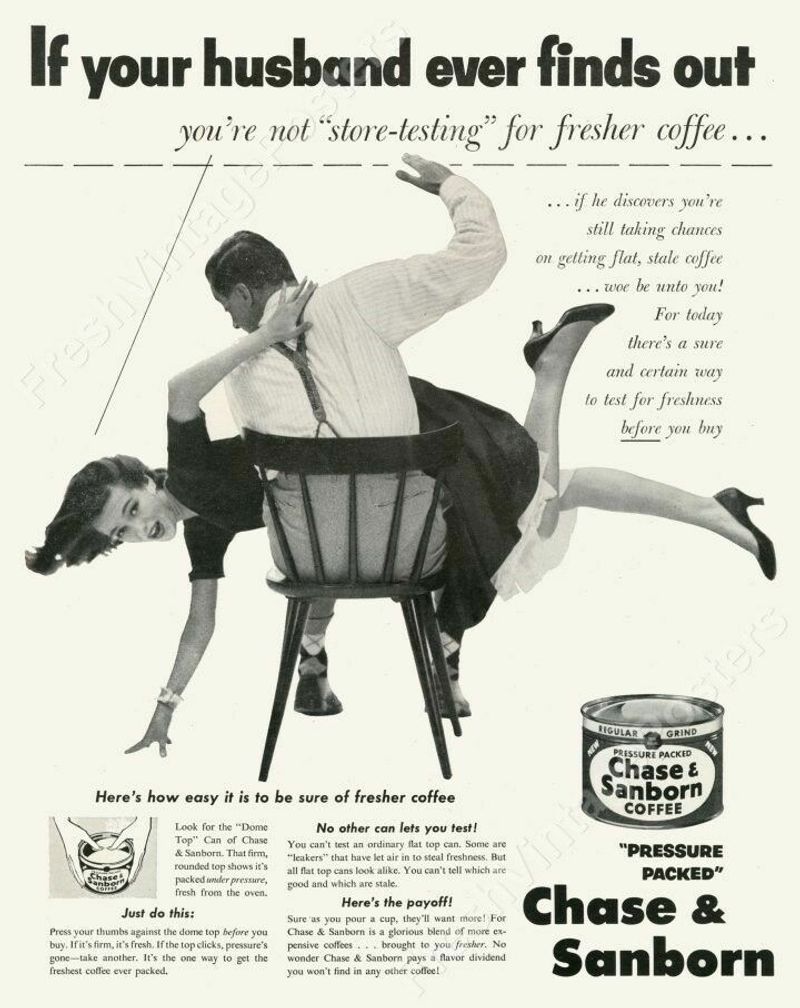
Chase & Sanborn Coffee’s appalling 1950s advertisement depicted a husband spanking his wife for buying the wrong coffee brand. The image showed a woman bent over her husband’s knee while he raised his hand to strike her, presented as humorous domestic discipline.
The ad normalized intimate partner violence as an appropriate response to a woman’s shopping choices. It suggested men had the right to physically punish their wives for minor household decisions.
This advertisement reflected and reinforced dangerous power dynamics in marriages of the era. Modern viewers would immediately recognize this as depicting domestic abuse rather than harmless humor about coffee preferences.

Comments
Loading…